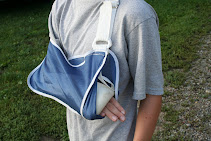People always talk about proximate causes in dealing with suits concerning accidents including product liability defect claims. What does proximate cause really means?
In product liability suit, a plaintiff must prove two things in order to claim damages from defendant. These two elements are:
1. Proof that the product was defective when it left the hands of defendant; and
2. Proof that the defective product was the proximate cause of plaintiff’s injuries.
A defective product is said to be a proximate cause of an injury if the injury was a direct, natural, or probable result of the defect's existence. In the end, the likelihood of plaintiff’s being able to claim damages against defendant rests on the real cause of plaintiff’s injuries.
If there is no other factor that could cause the injury aside from the defective product then pursuing claims for damages is easy. However, in cases where evidence indicates that the injury could have resulted from a number of causes, the case becomes complicated.
For instance, if the plaintiff was burned when he or she removed the glass pot from a drip coffee maker to pour a cup of coffee and the pot separated from the handle, a defect in the way the handle was attached to the pot could be one cause. Another cause, however, would be the fact that the plaintiff had previously dropped the pot on the floor and had heated it on the stove top, contrary to the manufacturer's instructions. In this case, proximate cause for proving liability will be harder to prove.
Similarly, if you are injured after altering a defective product, your alteration of the product may be the proximate cause of your injury and not the actual defect of the product.
Remember, proximate cause means the real cause of the injury. Figure this out first before you spend a lot of money pursuing your possible claims.
In product liability suit, a plaintiff must prove two things in order to claim damages from defendant. These two elements are:
1. Proof that the product was defective when it left the hands of defendant; and
2. Proof that the defective product was the proximate cause of plaintiff’s injuries.
A defective product is said to be a proximate cause of an injury if the injury was a direct, natural, or probable result of the defect's existence. In the end, the likelihood of plaintiff’s being able to claim damages against defendant rests on the real cause of plaintiff’s injuries.
If there is no other factor that could cause the injury aside from the defective product then pursuing claims for damages is easy. However, in cases where evidence indicates that the injury could have resulted from a number of causes, the case becomes complicated.
For instance, if the plaintiff was burned when he or she removed the glass pot from a drip coffee maker to pour a cup of coffee and the pot separated from the handle, a defect in the way the handle was attached to the pot could be one cause. Another cause, however, would be the fact that the plaintiff had previously dropped the pot on the floor and had heated it on the stove top, contrary to the manufacturer's instructions. In this case, proximate cause for proving liability will be harder to prove.
Similarly, if you are injured after altering a defective product, your alteration of the product may be the proximate cause of your injury and not the actual defect of the product.
Remember, proximate cause means the real cause of the injury. Figure this out first before you spend a lot of money pursuing your possible claims.



